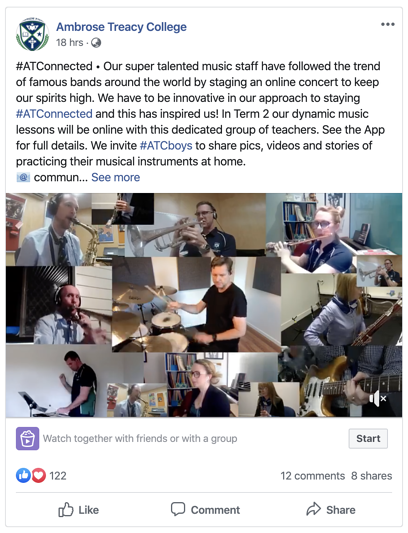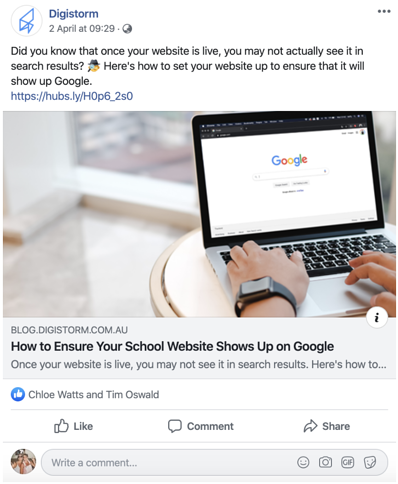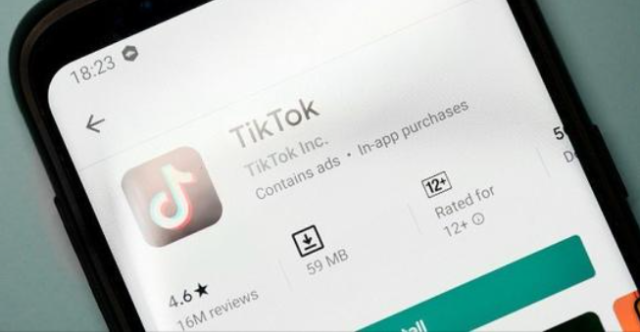As we enter a new decade it appears that change has had minimal effect on social media giant, Facebook, which remains to be one of the most popular social media platforms with 2.5 billion monthly active users globally.
Facebook is an engaging platform and an incredibly effective tool in your school’s inbound marketing strategy, but when it comes to posting content, it’s important to be aware of the major red flags that could be affecting your audience reach and engagement. In this post we’re covering five things that you might be doing on Facebook that could be costing you followers.
1. Posting too often
It’s important to have a social media presence and a regular Facebook posting schedule, however, there’s a major difference between sharing an appropriate amount of content and posting too frequently! So, how do you find the balance? For Facebook, we recommend posting three to four times a week to keep your audience engaged and interested in your content. Posting more frequently than this will make your content come across as a little spammy.
Oversharing on Facebook depends just as much on the type of content you’re sharing as the frequency of your posts. It’s likely that you’re going to have multiple content opportunities during the week and it can be hard to choose which content is most suitable to share on your School’s Facebook page. Trust us, you don’t need to share every small detail, instead, schedule posts around relevant content such as school events, sporting results, and class achievements. You can also utilize social media scheduling software, such as Coschedule or Hootsuite to streamline this process.
2. Forgetting to leverage photo and video content
Facebook receives a lot of traffic, so it’s easy for your content to get lost in the newsfeed. A great way to ensure that your content always stands is by including a photo, video or link in every post. It might sound a little obvious, but if your post only consists of text, it’s a safe bet that your Facebook community will just scroll past your content. Adding an image or video to your post not only looks aesthetically pleasing, but it also means that your post is more likely to perform better according to Facebook’s current algorithm. Below is an example of a well-paired Facebook post from Ambrose Treacy College where they have effectively partnered written text with a video to showcase their new online music classes. It’s an engaging post that catches your attention as a user and gives you a detailed insight into the new music class format.


Source: Ambrose Treacy College Facebook
3. Sharing unsuitable content
Sharing long-form content is a great inbound marketing tool for your school, but Facebook isn’t the best platform for it. If you have a large amount of information to share with your school community, make sure that you’re posting it to your school blog or website instead. You can still drive traffic to your longer blog posts by promoting a post preview on your Facebook page. Take a look at the example from our own Digistorm Facebook where we promoted one of our latest blogs, How To Ensure Your School Website Shows Up on Google, in a short but effective post.


Keep in mind that Facebook is also a channel where users come to be entertained or informed. It takes a more “relaxed” format compared to other social media channels and posts with overly promotional messaging can be poorly received by your audience. Facebook’s goal is to bring people together, so it’s best to try and balance the number of sales driven posts and think of creative ways to showcase your school instead. To help balance posts several businesses use the social media “rule of thirds” approach in their content vision. The rule of thirds focuses on breaking up your content into three different categories. These categories include:
- One-third of your posts should be dedicated to promotion to help drive traffic and enrollments.
- One-third of your posts should be dedicated to re-sharing relevant content from other accounts such as posts from companies, other schools or user-generated content from existing parents of the school.
- The last third of your posts should be dedicated to sharing personal content from your schools such as school events, classroom achievements and sporting results.
By following the “rule of thirds” technique a combination of engaging content can be posted to your school page that will showcase your school to prospective parents and users without coming across as overly sales-driven.
4. Ignoring your community
In 2020 customers expect strong social interactions from brands, so If you aren’t monitoring your Facebook comments and getting involved in the conversation, you’re doing yourself a disservice. Facebook users leave comments to create engagement and connections with your page, so if you don’t respond to the comments on your Facebook posts your connections may be feeling ignored or silly for attempting to engage. If you stay up to date with your Facebook page it should only take a few minutes to reply to comments – you could even elect a person in your team to monitor and reply to comments on a daily basis. Your Facebook engagement will continue to increase the more you respond and interact with your community. Promptly replying to questions and comments on your school’s Facebook page shows users that you’re willing to take time to support your prospective families.
If you receive a negative comment, it’s important to know how to appropriately respond to the situation. Some businesses choose to delete or ignore negative comments but the best option is to try turning a negative into a positive. Start by reading the comment and understanding what the user is attempting to communicate – there might actually be some useful feedback and information that your school can take on board. You should attempt to reply to the comment as soon as possible, acknowledge the users’ concerns and attempt to provide support and a resolution for them.
PDFs can’t be uploaded to Facebook business pages for a reason! There’s a place for them, but it isn’t Facebook. This is because any text becomes hard to read, and because PDFs are usually designed to be read in A4 format. Write short, effective caption text with a relevant photo and share a link to the PDF instead.
5. Ignoring your audience insights
Understanding what works and what doesn’t work on Facebook will help you deliver meaningful messages and create targeted ads for your Facebook community. You can access your Facebook analytics through the “insights” tab on your business page. Facebook now splits the analytics into ‘audience’ and ‘page insights’ to give you an all-round overview of your page performance. Here you can find information about your audience such as; geographic location, demographics and interests. Your ‘page insights’ also provides further details on your content’s reach and engagement including; top-performing posts, post reach, engagement, and user actions.
We recommend checking your page insights at least once a week to see the time of day and type of post that works best for your school. As mentioned in one of our previous blogs, the simplest way to maximize the reach of your Facebook post is to be posting at the most optimal time. If you’re ignoring your insights and the important data it provides you are disadvantaging yourself against competitors.
Click here to read this article on the Digistorm website.


![[TOOLS] The 14 Most Important Metrics To Track WITH GOOGLE ANALYTICS](https://www.schoolhouse.agency/wp-content/uploads/2021/08/TOOLS-The-14-Most-Important-Metrics-to-Track-WITH-GOOGLE-ANALYTICS-1024x576.png)


